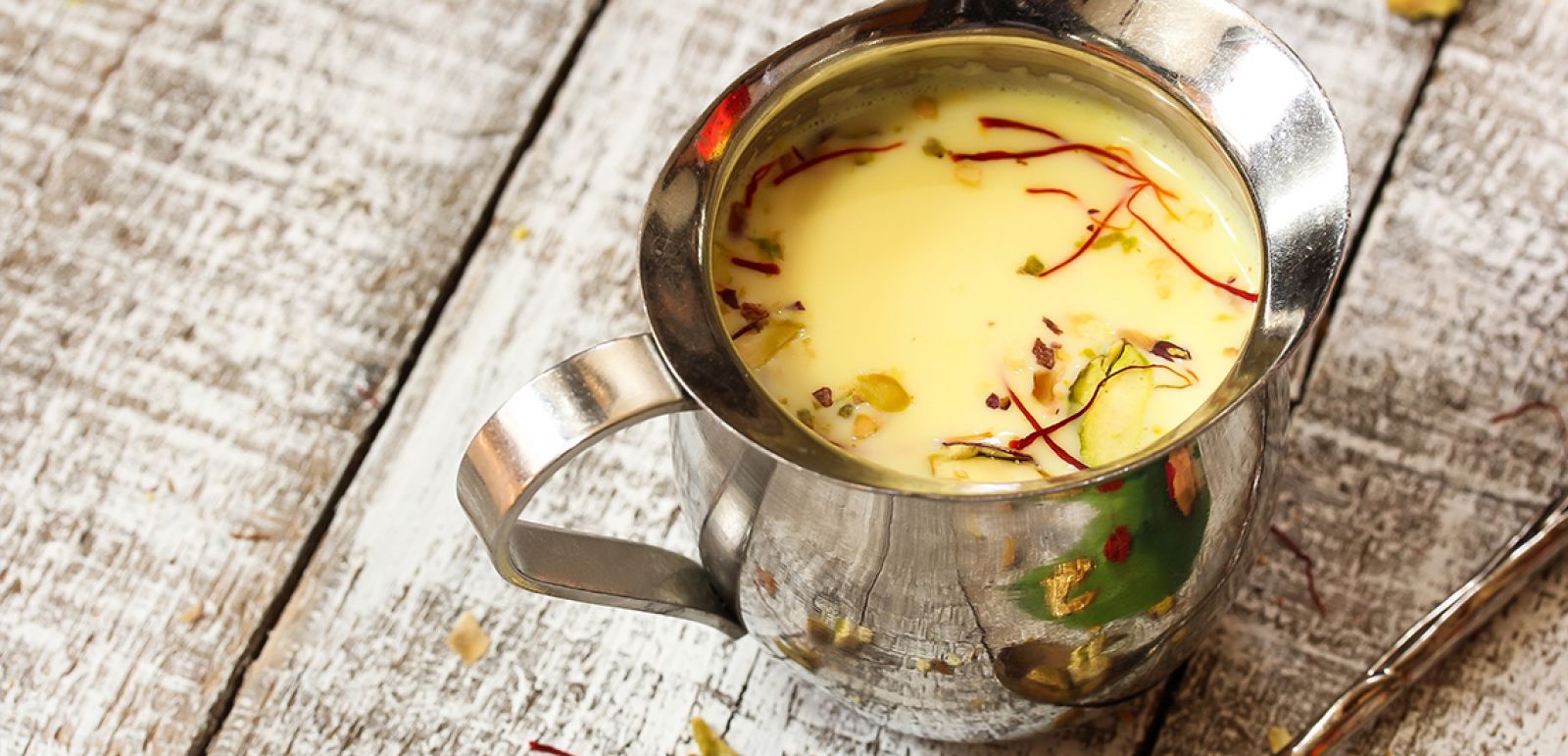
Insights
Bhang Lassi - The Oldest Cannabis Drink From India
Let's find out how bhang originated and why bhang lassi is revered in India
Bhang lassi is a drink that's made of yogurt or milk, nuts, spices such as cardamom and cinnamon, rose water, and—yes—cannabis, ground and mixed with water, then formed in the shape of balls.
Let's know what is bhang firstly and its historical presence within Indian culture and religion.
In one of the biggest event in Hindu mythology where the Gods and demons joined together in churning the Ocean of Milk, various things began to rise out of as a result, first the wish-giving cow, Surabhi, rose out, delighting gods and demons alike, then Varuni, with rolling eyes, the divinity of wine, followed by the Parijata, the fragrant tree of Paradise, then the graceful troops of apsaras. These were followed by the moon, which was grasped by Shiva and placed upon his brow, and then a draught of deadly poison, also taken by Shiva who drank of it, lest it should destroy the world, a selfless act that is said to have turned the God blue when the poison became stuck in his throat. Then appeared Dhanwantari holding in his hand the vessel of amrita, the dew of life, lighting up the eyes of both the Gods and demons with desire.
The story has it that after the amrita appeared in the Kumbha (urn) the demons attempted to gain control of it and as a result, a 12-day battle, equal to twelve earthly years, took place between the Gods and the demons in the heavens. During the battle, the celestial bird, the Garuda, flew away with the Kumbha of amrita to protect it from the hands of the demons. To ensure that the precious amrita did not fall into the hands of the demons, the Kumbha (vessel) of nectar was temporarily hidden at four places on the earth – Prayag (Allahabad), Haridwar, Ujjain, and Nasik. Ancient tradition has it that one of the miracles that resulted from the spilling of the amrita was the creation of Hemp (Bhang).
One of Hinduism’s best-known legends describes a plot when Shiva intervened to drink up the poison that also emerged during the churning, it turned his throat blue and caused him great agony. Parvati offered him ground bhang to soothe the pain.
Hence, bhang takes on special meaning in Indian culture as the plant preferred by Shiva.
When the British established rule over India in the mid-1800s, they were initially astounded at such widespread use of bhang in the country; in the late 19th Century, they commissioned a study of the drug’s effects and cultural significance.
“To forbid or even seriously restrict the use of so holy and gracious an herb as the hemp would cause widespread suffering and annoyance,” the report said. “It would rob people of solace in discomfort, of a cure in sickness, of a guardian whose gracious protection saves them from attacks of evil influences.”
Although the Narcotic Drugs and Psychotropic Substances Act of 1985 prohibits the production, sale, and consumption of certain parts of the cannabis plant, the leaves are an exception. There are even government-approved bhang shops in cities like Jaisalmer, Pushkar, and Varanasi.
The Atharva Veda mentions cannabis as one of the five most sacred plants on Earth and says that a guardian angel resides in its leaves. It also refers to it as a “source of happiness,” a “joy-giver” and a “liberator”. Ayurveda considers the cannabis plant to be of medicinal value and in the Sushruta Samhita (6 BCE) it is used to aid digestion and appetite. So common is it in Ayurveda that it has been called the “penicillin of Ayurvedic medicine”.
Bhang also plays an important role in Hindu celebrations like Shivratri (known as the 'night of Shiva') and Holi (the festival of colors). During these times, the addition of bhang to a traditional thandai as well lassi heightens the general sense of merriment on the streets.
Here's the recipe of Bhang Lassi via Civilized:
Bhang lassi ingredients:
- 1/2 oz. Cannabis
- 2 Cups warm whole milk
- 1/2 Cup sugar
- 1 tbsp Coconut milk
- 1 tbsp Almonds, chopped
- 1/8 tsp Powdered ginger
- 1 pinch Garam masala
- 1/2 tsp Grenadine
- 1 cup Water
How to make it:
- Bring water to a boil in a teapot, and add cannabis to it.
- Brew for about 7 to 10 minutes, then strain.
- Gradually grind the strained cannabis along with 2 tbsp of milk using a mortar and pestle; repeat this process several times.
- Strain the milk into another bowl and keep aside.
- Add a little more milk to the cannabis and grind it along with the almonds, repeat this several times.
- Strain the liquid through your sieve to remove the excess cannabis plant matter, and proceed to pour the milk, coconut milk, grenadine and water into one pan.
- Add ginger, sugar, and garam masala, bringing to a boil while stirring continuously.
- Take the mixture off the heat. Once it is at a reasonable temperature, place it in the fridge to continue cooling for a few hours.
- Your bhang lassi is ready to serve!
Disclaimer - The information contained in this article is for educational and informational purposes only and is not intended as health or medical advice. Always consult a physician and qualified professional regarding any questions you may have about a medical condition or health objectives for cannabis's medical/recreational use.
Information source: BBC, Scroll, Cannabis Culture, Civilized



